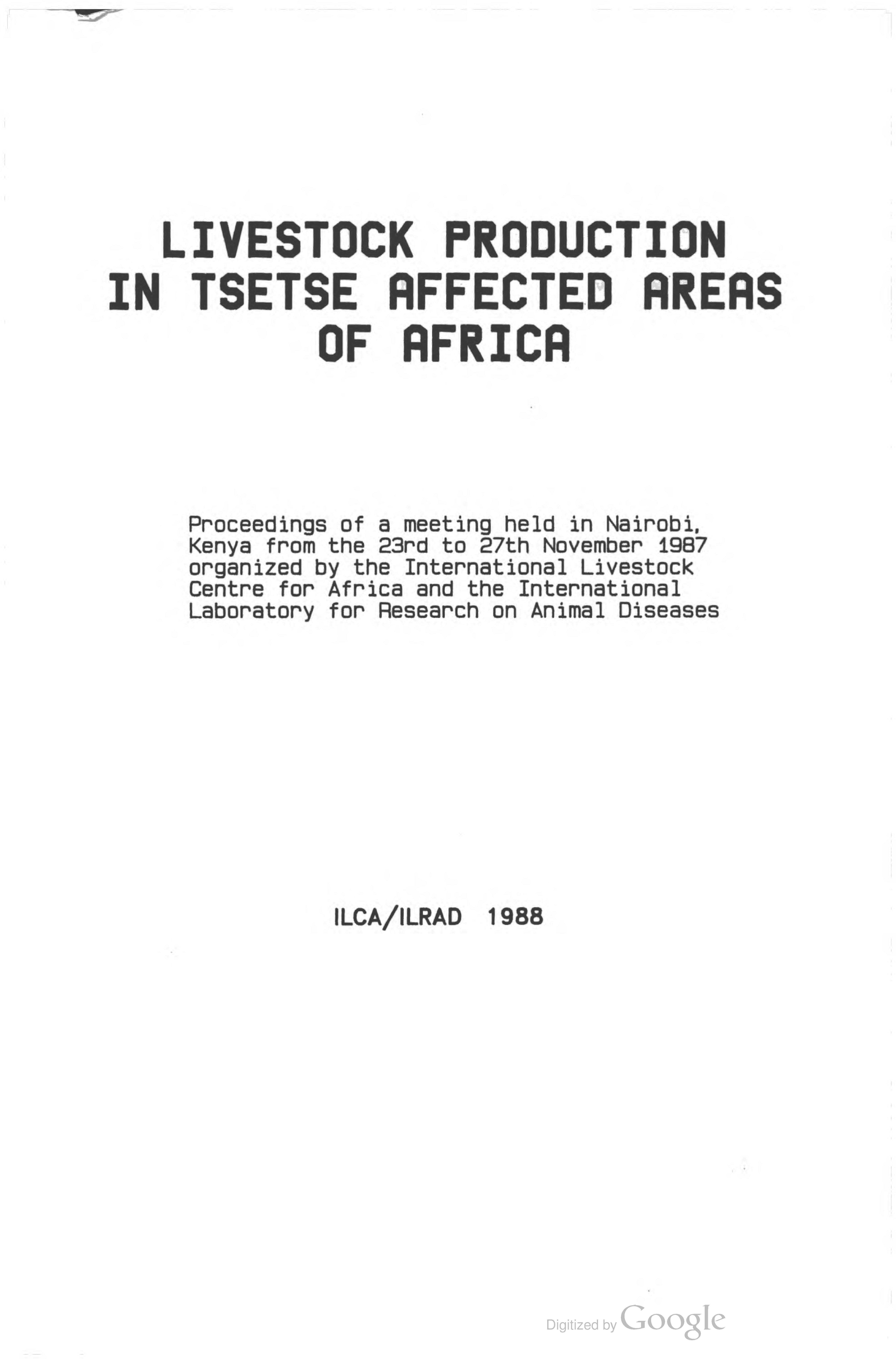Livestock development and research to 2010: Into the new millennium
Livestock development strategies for low income countries. Proceedings of a roundtable
This volume contains an executive summary of papers and the discussions on them as well as the reports of working groups and the recommendations of the Roundtable on Livestock Development strategies for Low Income Countries. In addition to the executive summary there is a Keynote paper and two other background papers, two papers on issues, constraints and opportunities for livestock development and five papers on options for increasing livestock's contribution from the major production systems.
Livestock systems research in Nigeria's subhumid zone
Compilation of proceedings of the 2nd ILCA/NAPRI symposium on livestock production in subhumid Nigeria discussing the ecology, vegetation & land use & development potential of the zone; traditional cattle & small ruminant production practices; research updates in livestock systems research, animal nutrition & feed production; extension & adoption of innovations; and future research.
Livestock production in the subhumid zone of West Africa : A regional review
Description of geographical aspects of the Subhumid Zone of West Africa and economic and sociological aspects of the Fulani ethnic group, w. emphasis on fodder resources, range management, livestock raising, livestock management, and animal diseases, w. analysis of land use & land development strategies, and directions for future research.
Low altitude aerial surveys in pastoral systems research
Discusses how low level aerial survey can be used to diagnose constraints within pastoral systems and the relative cost effectiveness of such operations, with particular reference to flight & sample procedures and information collection and analysis; presents some results from low-altitutde aerial survey undertaken by ILCA in Nigeria, Mali, Niger and Ethiopia.
Livestock production in tsetse affected areas of Africa. Proceedings of a meeting
Presents papers dealing with various aspects of livestock production in tsetse affected areas of Africa, particular tsetse challenge, trypanosomiasis epidemiology, trypanotolerance, biological productivity, chemotherapy, economics, and genetics of trypanotolerance.
Managing forests and improving the livelihoods of forest-dependent people: reflections on CIFOR’s social science research in relation to its mandate for generalisable strategic research
CIFOR has been actively engaged in field research in Indonesia focussing particularly on the role of forests and forest products in generating sustainable livelihoods for local users. Issues such as incentives and institutional structures for equitable and sustainable management systems have been highlighted in this research, which has been undertaken with the active co-operation of local NGOs.
Manuel pratique de production durable des gommes au Burkina Faso
L es gommes en général et la gomme arabique en particulier sont des produits de base qui font l’objet aujourd’hui d’un commerce international florissant et le développement de la filière des gommes au Burkina Faso pourrait contribuer à lutter contre la pauvreté en milieu rural. C’est dans cette perspective que plusieurs initiatives ont été lancées depuis la fin des années 70.
Marketing patterns of rainfed and irrigated systems: Do they differ?
Mathematical modelling of livestock production systems: Application of the Texas A & M University beef cattle production model to Botswana
The animal science systems group at Texas A & M University (TAMU) has developed a computer based beef cattle production model for use in tropical countries. This model can be used to predict animal and herd productivity under a variety of management regions in diverse environments. Economic analyses can then be made, based on these predictions.











